Need more details? View the extended version: How to Make Ricotta Agnolotti. For more recipes like this, visit the site at www.mosthungry.com
I love making fresh pasta—an occasional task I now get to share with my three-year-old. It’s like Play-Doh, but edible, and somehow, less of a mess?
I have a pretty standard fresh homemade pasta dough that I’m using as the base of these agnolotti. If you’ve never made fresh pasta before, I would highly encourage you try, at least once. And, if you already enjoy making pasta, go all in: make a big batch, spend a few hours getting lost in the process, enjoy some now and then freeze a bunch for later. Trust me, you’ll be happy you did!
These agnolotti are a delicious stuffed pasta, filled with fresh ricotta, Parmesan, and a touch of nutmeg. They’re incredibly tasty, and like most fresh pasta, the effort is well worth the payoff in flavor. I don’t think making fresh pasta is particularly difficult, and I certainly don’t want you to think so either. It’s more of a time-consuming process and can be a bit monotonous—but that’s what I love about it. The repetition—rolling, filling, and shaping each little agnolotti or “pillow”—it’s my version of a moving meditation.
Want to support the work that goes into creating these recipes—consider becoming a paid subscriber! Your support helps cover groceries, recipe testing, and the time it takes to develop new content. Every subscription means more recipes coming your way!
Ingredients
For The Pasta Dough:
300 g flour 00 flour is recommended, but all-purpose flour works
3 eggs
The Ricotta Filling:
2 C ricotta cheese (487g), full fat, and strain if very wet
1 egg yolk
2-3 tbsp parmesan (18g), freshly grated
1/4 tsp freshly grated nutmeg
salt
pepper
Equipment
Pasta Machine - highly recommended, but you could roll out the pasta by hand if you wanted
Pasta cutter or a zig-zag pastry cutter
Pastry bag or zip-top bag to pipe out filling
Instructions
Make the Pasta Dough:
Dump flour onto a wooden surface or countertop. Make a well in the center. Crack the eggs into the well and start mixing the eggs slowly incorporating the flour as you go.
Knead the dough for about 8–10 minutes, until everything is smooth, fully combined, and the dough bounces back when pressed with a fingertip. Cover and let rest while you make the filling.
Making the Ricotta Filling:
Combine the ricotta, Parmesan, egg yolk, freshly ground nutmeg, salt, and pepper. Mix until smooth and fully combined. Transfer to a pastry bag or a zip-top bag (to use as a makeshift pastry bag) to pipe the filling onto the pasta.
Rolling Out the Dough:
Cut dough into 4 portions. Keep unused portions covered so they don’t dry out. Roll out one portion at a time using a pasta machine, starting at level 1. Fold the dough over on itself a few times until it becomes smooth and elastic. Then, gradually increase the settings until you reach about 1mm thickness (for my machine, that’s level 6).
Shaping the Agnolotti:
Pipe the filling onto the pasta sheet 1 inch from the edge. Depending on the width of your sheet (and your confidence level) you may be able to fit two rows of filling per sheet. If unsure, do one row at a time.
Take the edge of the pasta and fold it over the filling, pressing to seal. You should have one long tube of filled pasta. Trim off any excess dough and fully seal the edge by cutting with a zig-zag pastry wheel or pasta cutter, leaving a ½–¾ inch border from the filling.
To form each little “pillow,” start at one end and pinch the tube of filling firmly at regular intervals to create individual agnolotti. You can make them as big or small as you like—I did 1–1.5-inch sections here, but you could also make longer 3-inch ones if you prefer.
Now that you have a long, dimpled rope of filled pasta, cut each section with a zig-zag pasta cutter. This seals them and folds them over on themselves. Give each piece an extra squeeze on each end to ensure they’re fully sealed.
Storing & Cooking:
Arrange the agnolotti on a lightly floured, clean kitchen towel or sheet tray. You can cook them fresh—they’ll take only a minute or two in salted boiling water.
Or, freeze any you won’t eat right away. To freeze, place them on a sheet tray in the freezer until solid, then transfer to an airtight container or plastic bag. Cook them directly from frozen—they usually take about 3 minutes. Once they float, they’re just about done.
Brown Butter Sauce with Sage and Walnuts
Brown butter, crispy sage and toasted walnuts make one of the easiest and most delicious pasta sauces. pairs great with agnolotti, gnocchi or ravioli.
If you’re enjoying my recipes and want to support the work that goes into creating them—consider becoming a paid subscriber! Your support helps cover groceries, recipe testing, and the time it takes to develop and share new content. Plus, it keeps this space going. Every subscription means more delicious recipes coming your way. I love having you here!


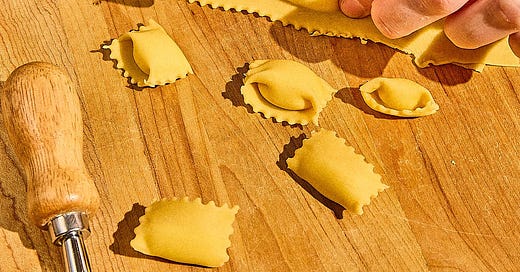




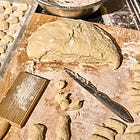
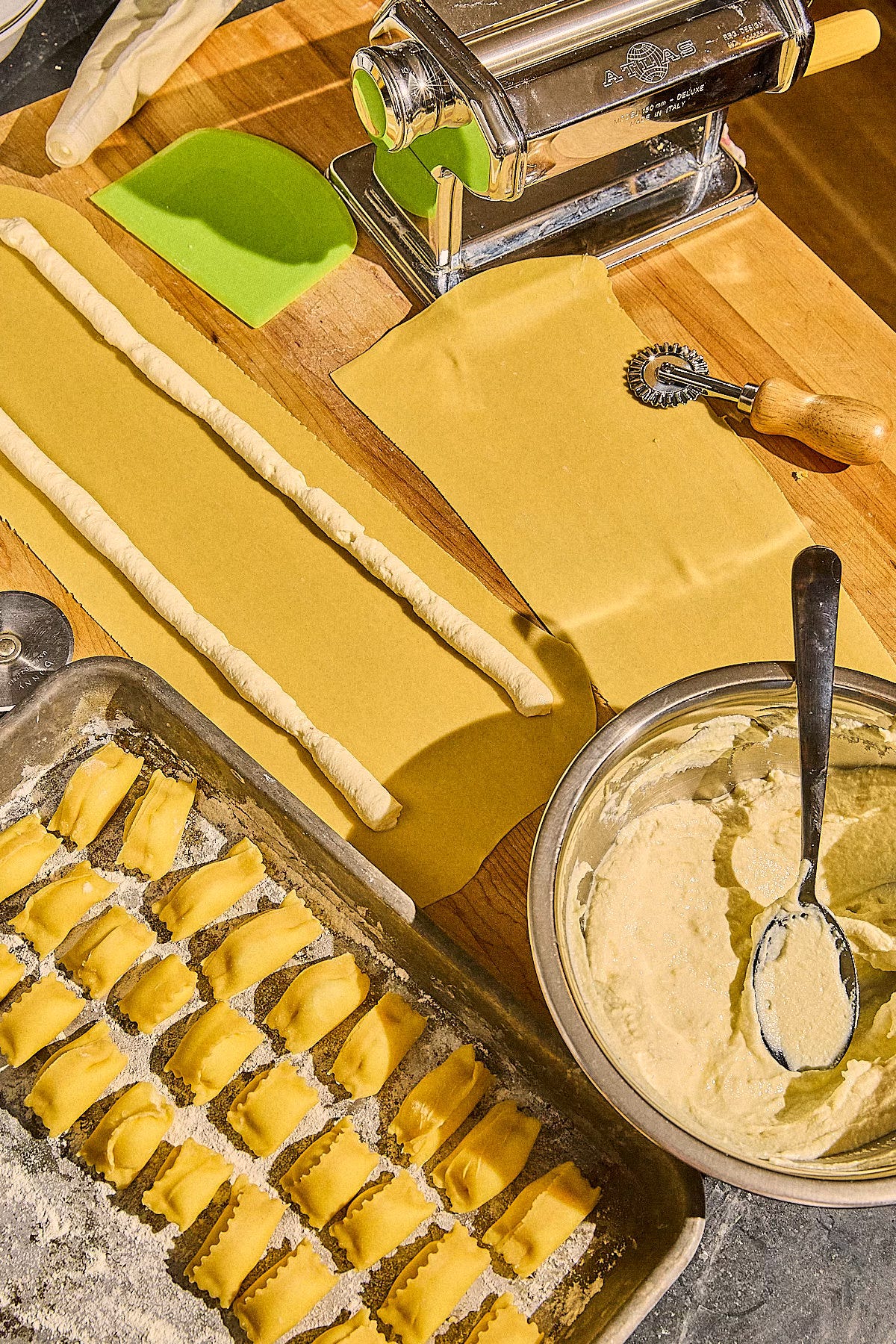

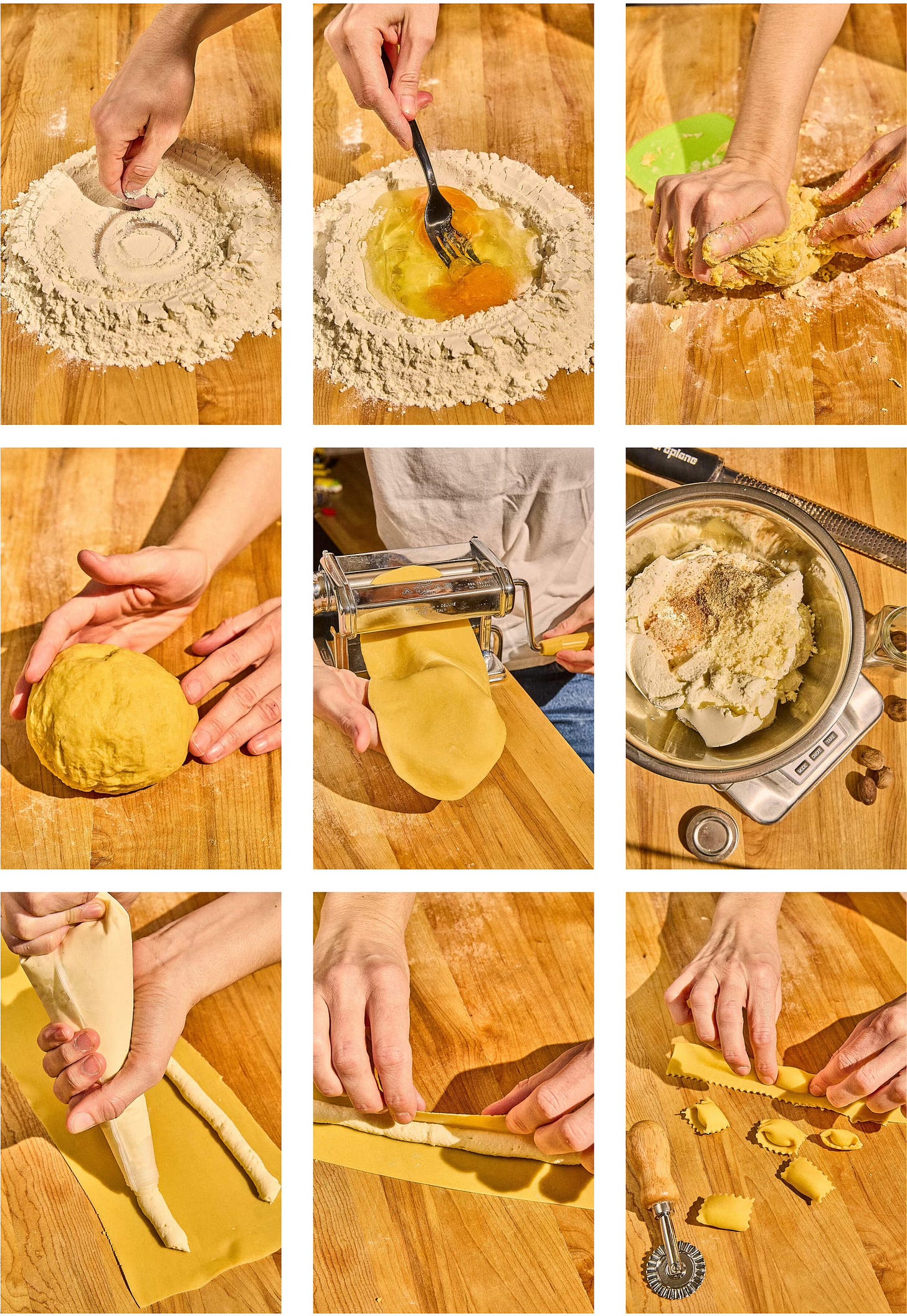
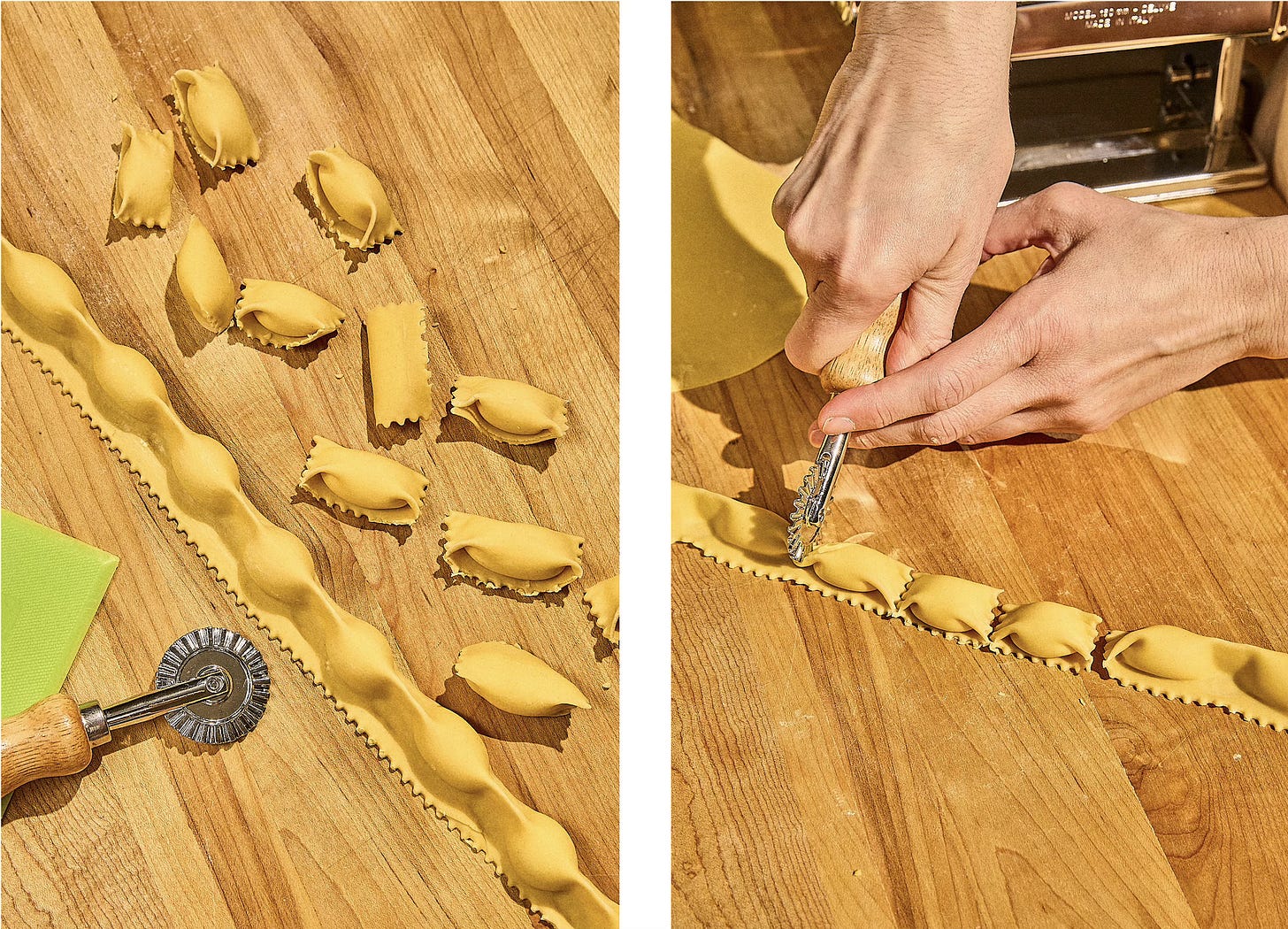
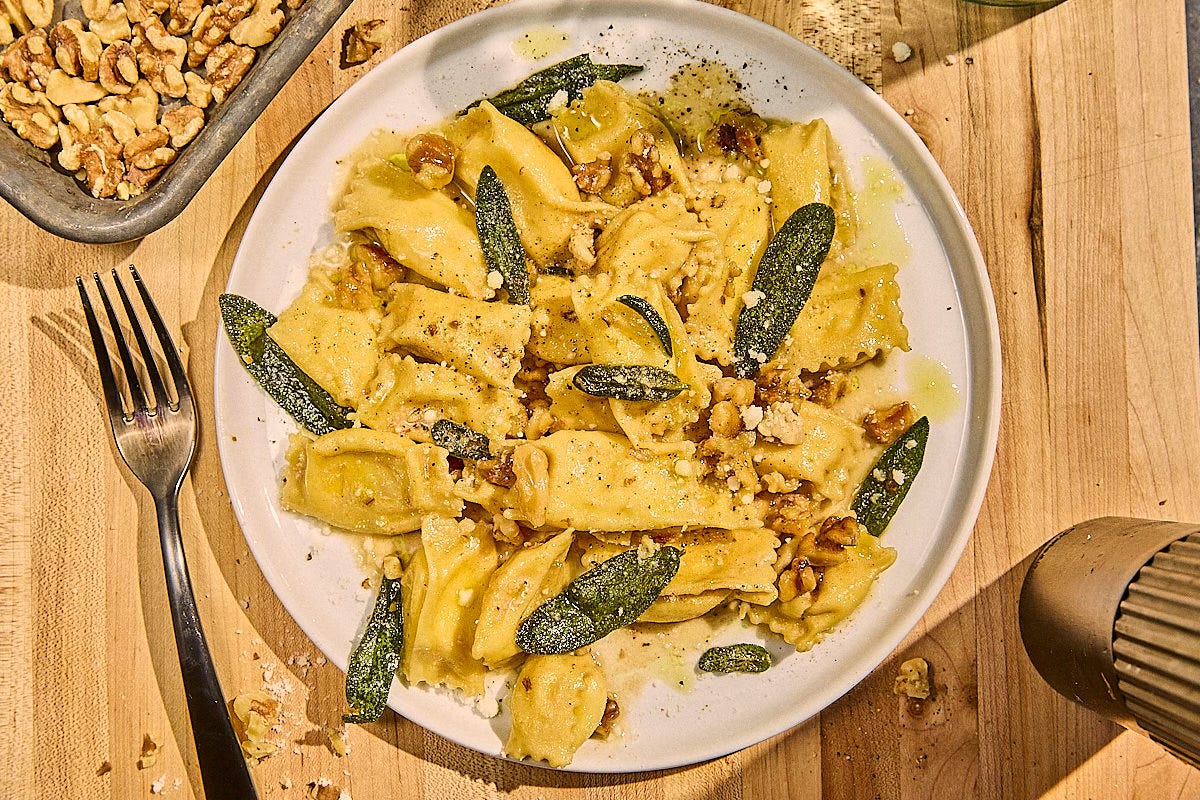


The color balance on your photos is spectacular. I always find pasta dough fading into our wood butcher block.